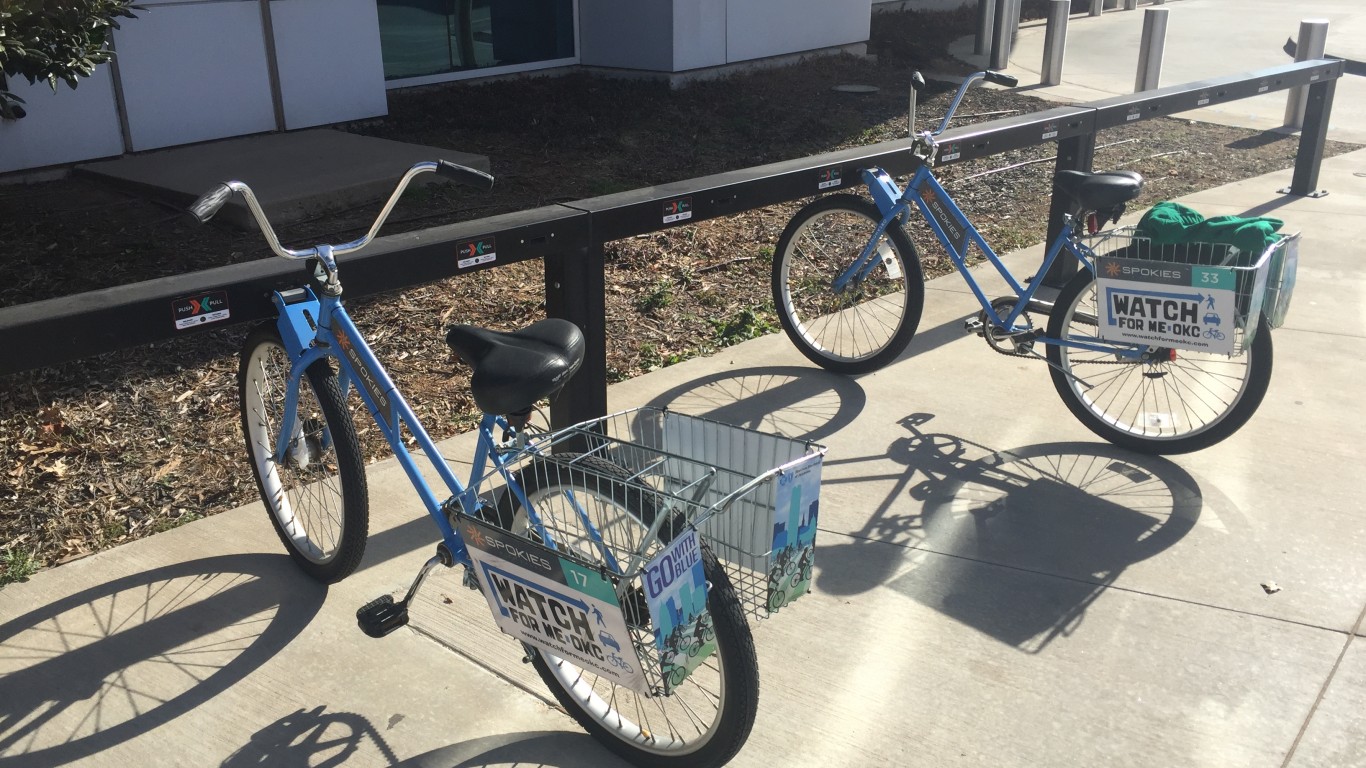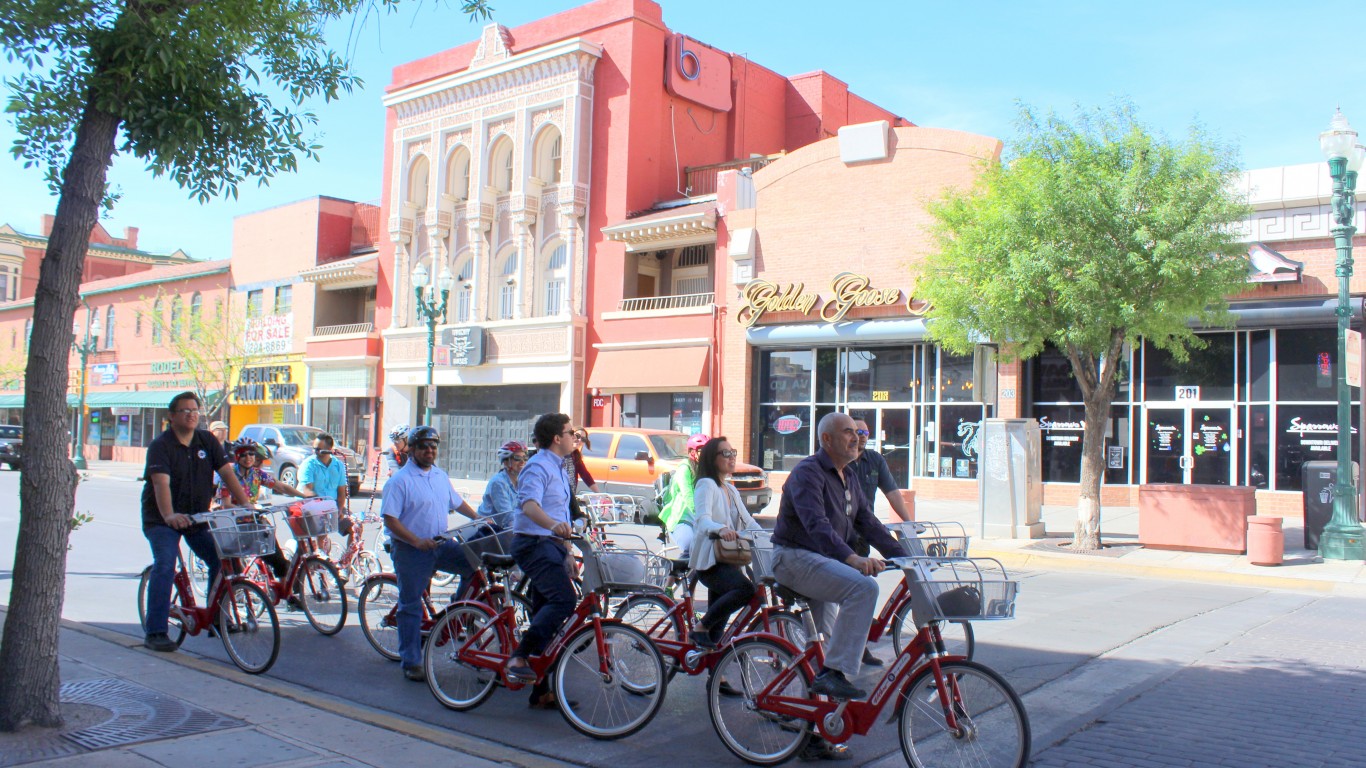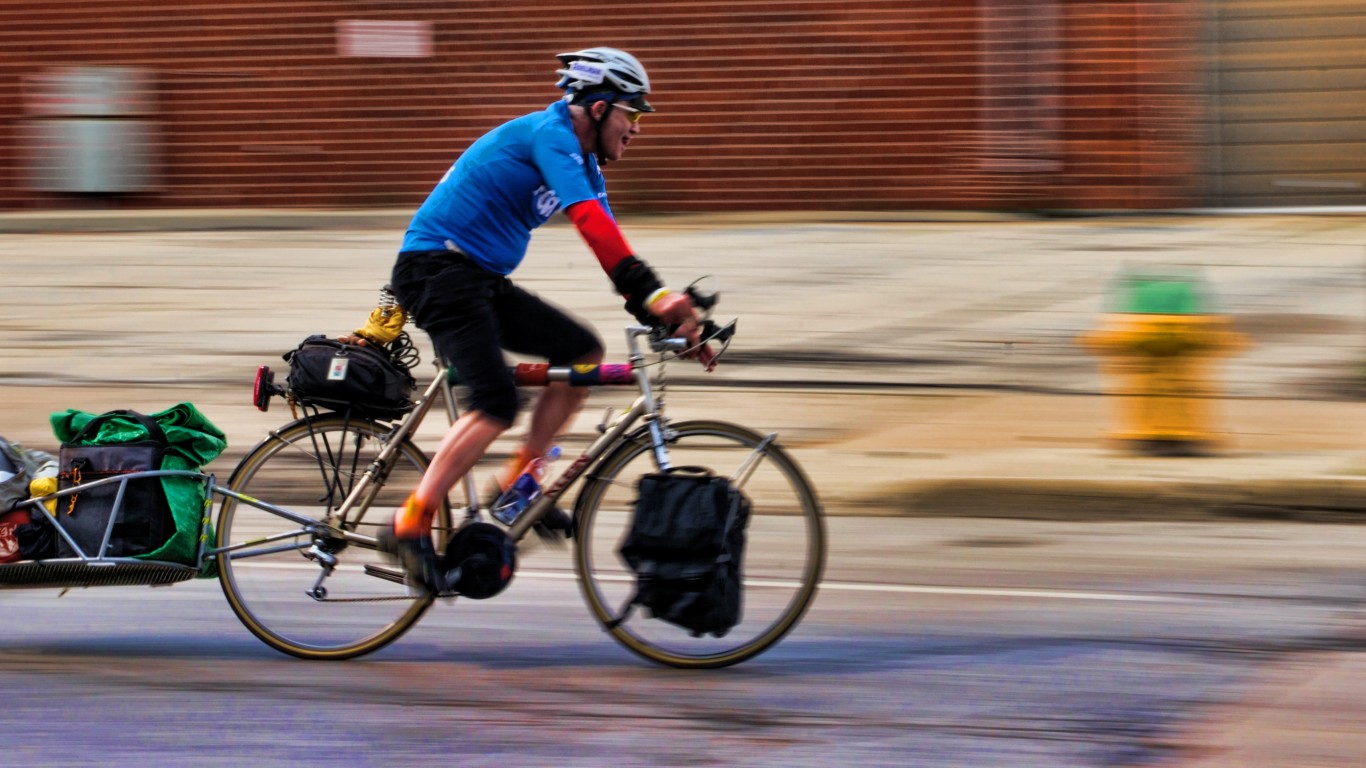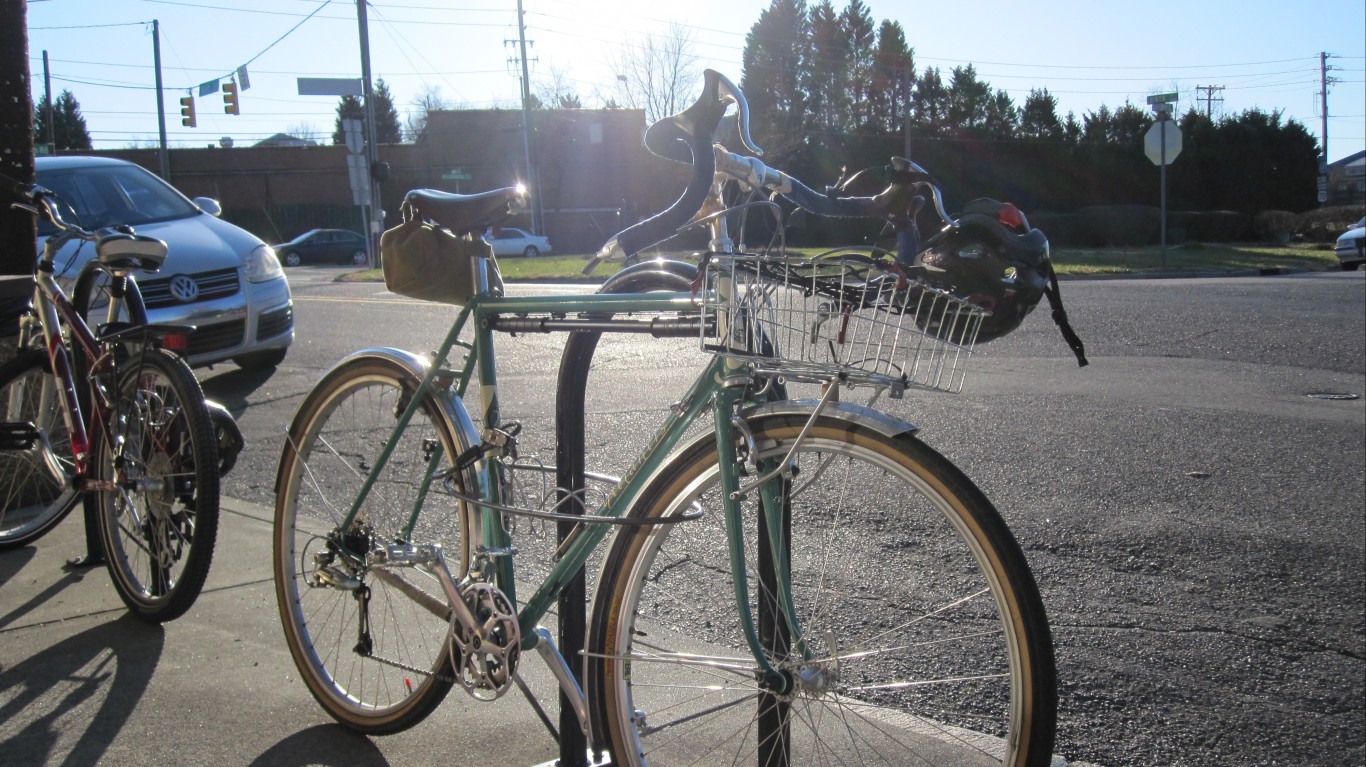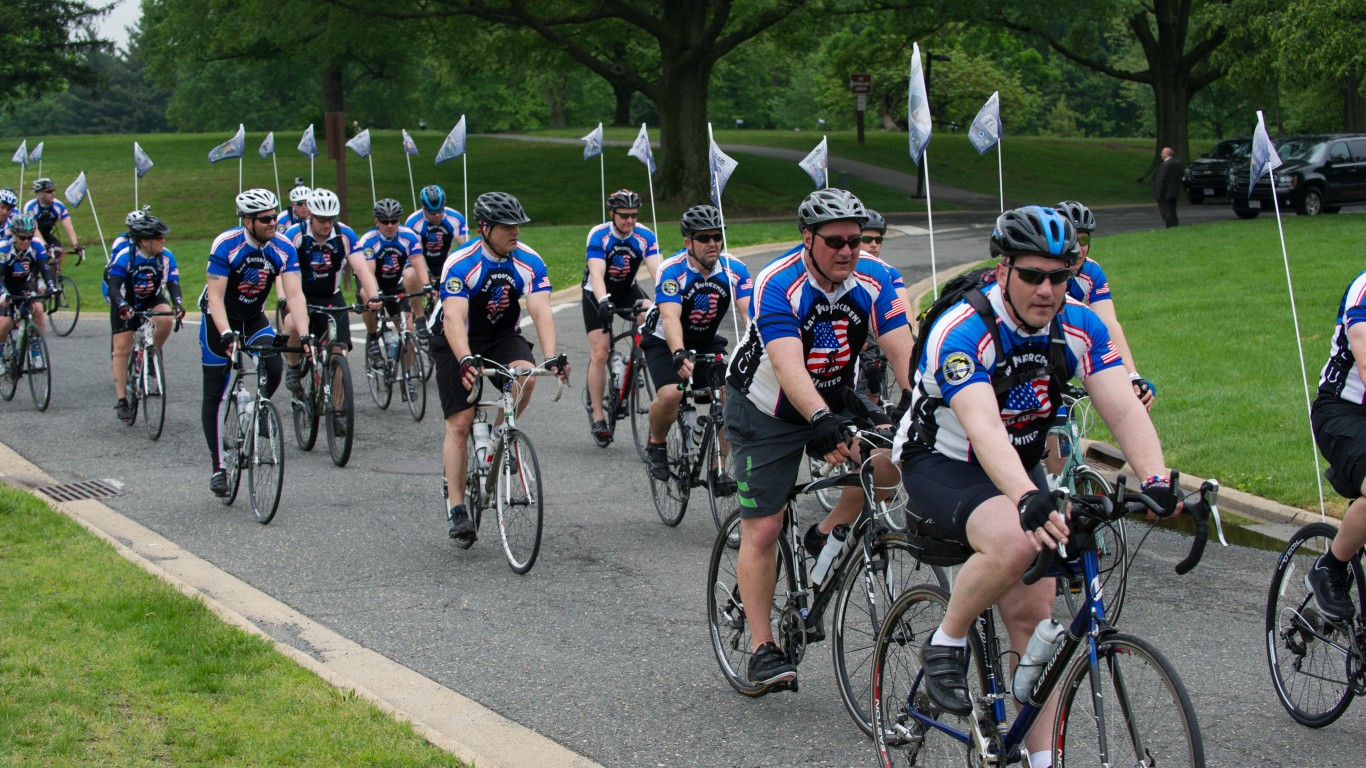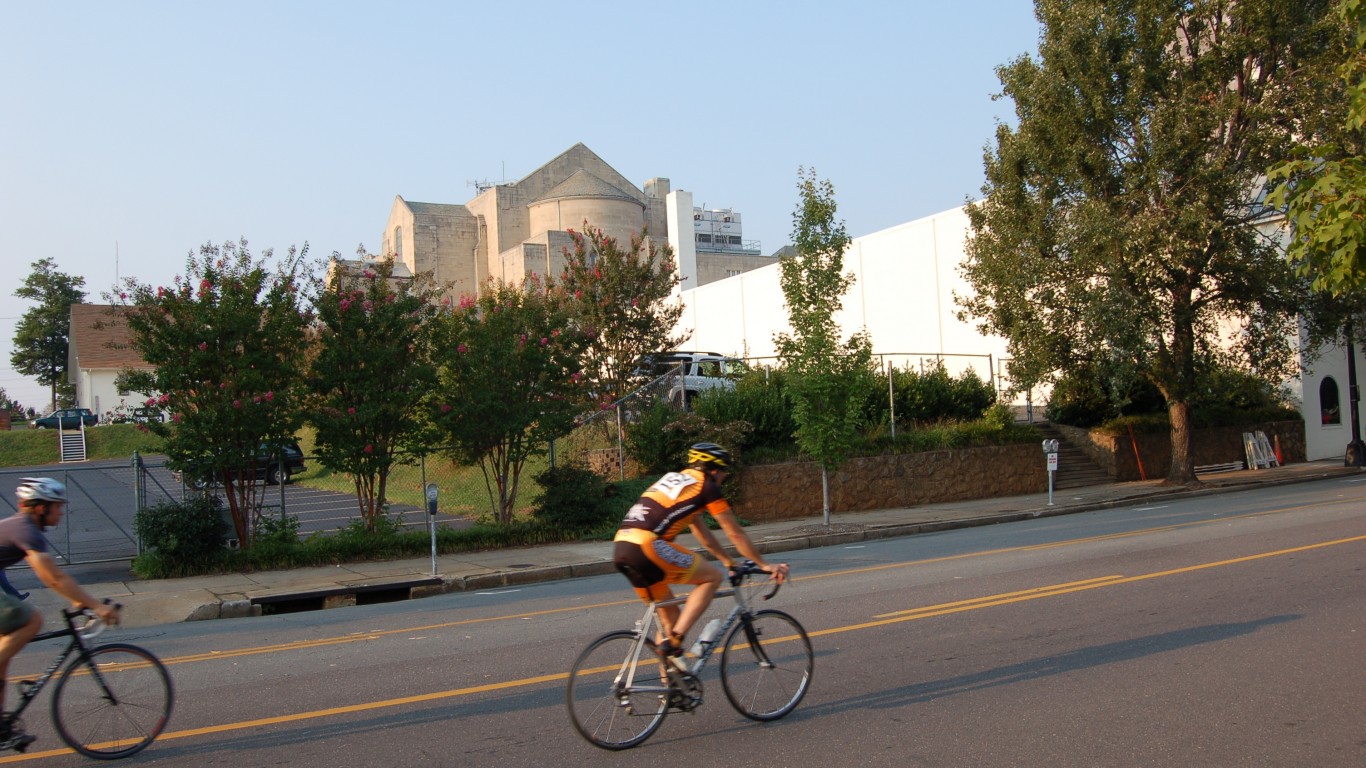
Since the COVID-19 pandemic began, tens of millions of people have been working from home, which means they don’t have to commute to offices or other workplaces, and also that they may have changed their exercise and recreation habits.
Cycling has been a major beneficiary of these trends. It’s a great form of exercise, it offers an escape from the home, and it’s a very practical means of transportation. At rush hour bikes move faster than cars on gridlocked streets. Here are America’s worst cities to drive in.
Cycling is also far kinder to the environment than driving, or even using public transportation — which many have been avoiding during the pandemic anyway. These are 30 easy ways to be more environmentally friendly.
24/7 Tempo has compiled a list of the worst cities for bike riders. They’re typically mid-sized cities, although many have seen rapid growth in the last couple of decades, and suburban sprawl may be a factor in their rankings. (Our list of the best cities for bike riders includes much larger ones, such as New York and Chicago.) Almost all the worst cities are in the South and West; only one — Chesapeake, Virginia — is on the Eastern Seaboard.
Click here to see the worst cities to ride a bike
To identify the worst cities for bike riders, 24/7 Tempo reviewed the Bike Scores of the 100 largest cities in the United States from apartment search services company Walkscore. We also considered the percentage of commuters who use a bicycle to travel to work, as well as the total population of each of the cities, using data from the U.S. Census Bureau’s 2019 American Community Survey.
Some states fare worse than others in the ranking. North Carolina is almost in a class of its own, with no less than six cities on the list: Durham, Raleigh, Greensboro, Charlotte, Fayetteville, and the first-ranked Winston-Salem. The reason certainly isn’t poverty and lack of resources: North Carolina is home to the Research Triangle and its leading universities. If people and politicians there want to make their cities more bike-friendly, the pandemic could present an opportunity.
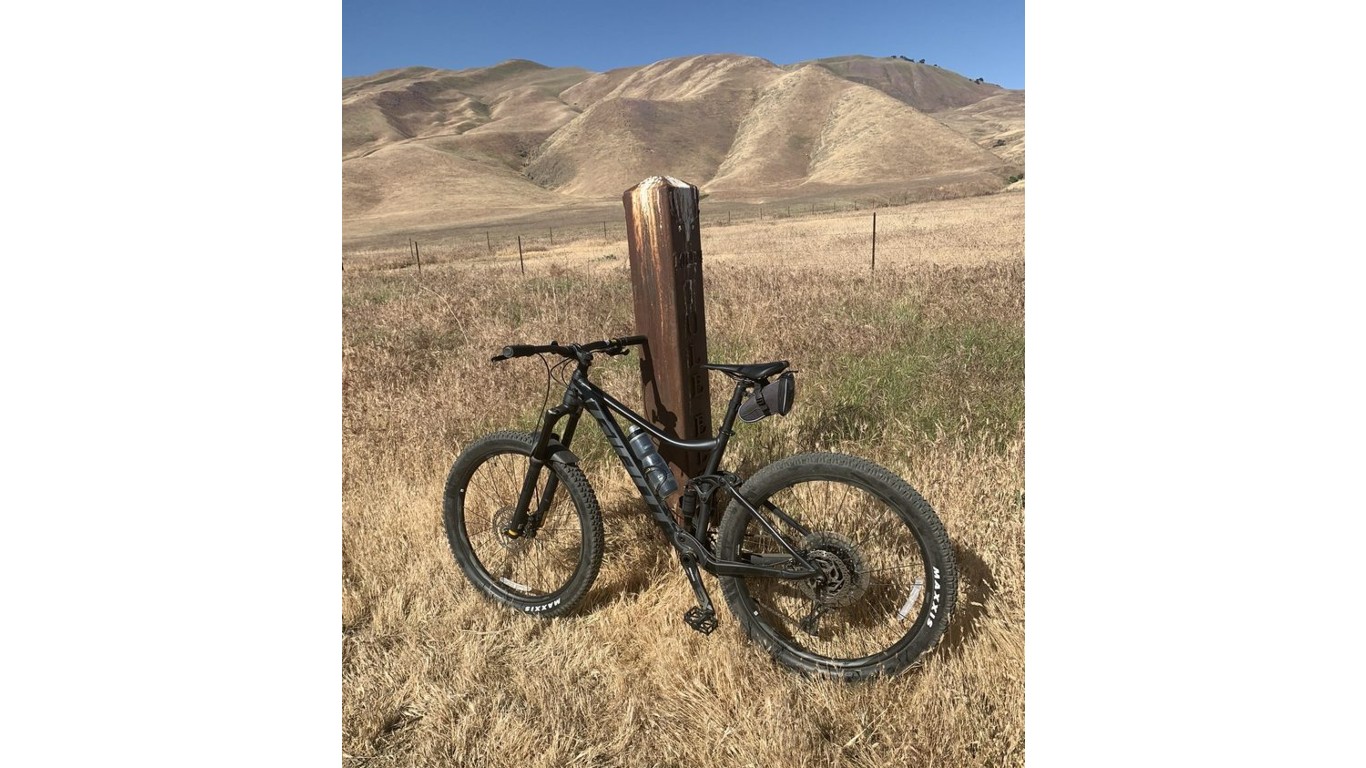
25. Bakersfield, California
> Bike score: 43.7
> Commuters who travel to work by bike: 0.4% — #66 out of 100 largest cities
> Population: 377,917
[in-text-ad]
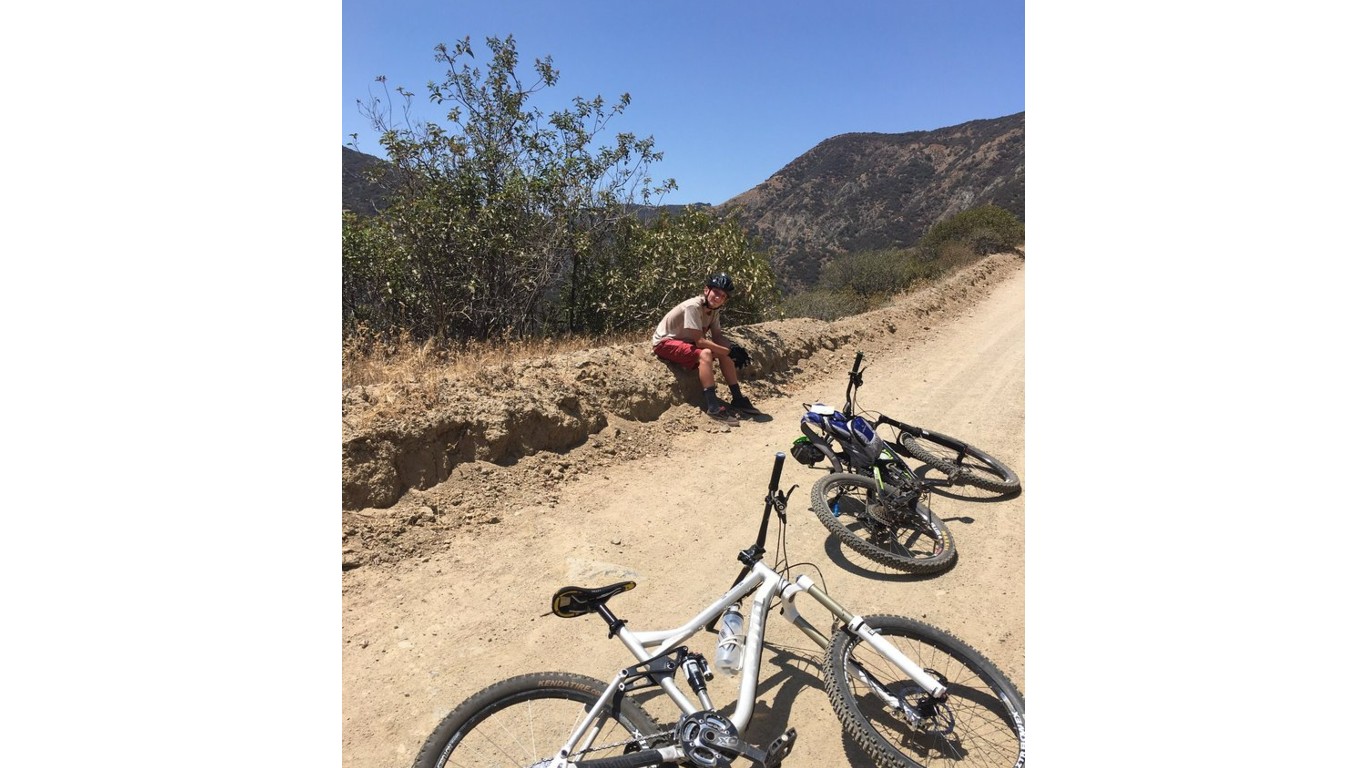
24. San Bernardino, California
> Bike score: 43.6
> Commuters who travel to work by bike: 0.4% — #66 out of 100 largest cities
> Population: 216,089
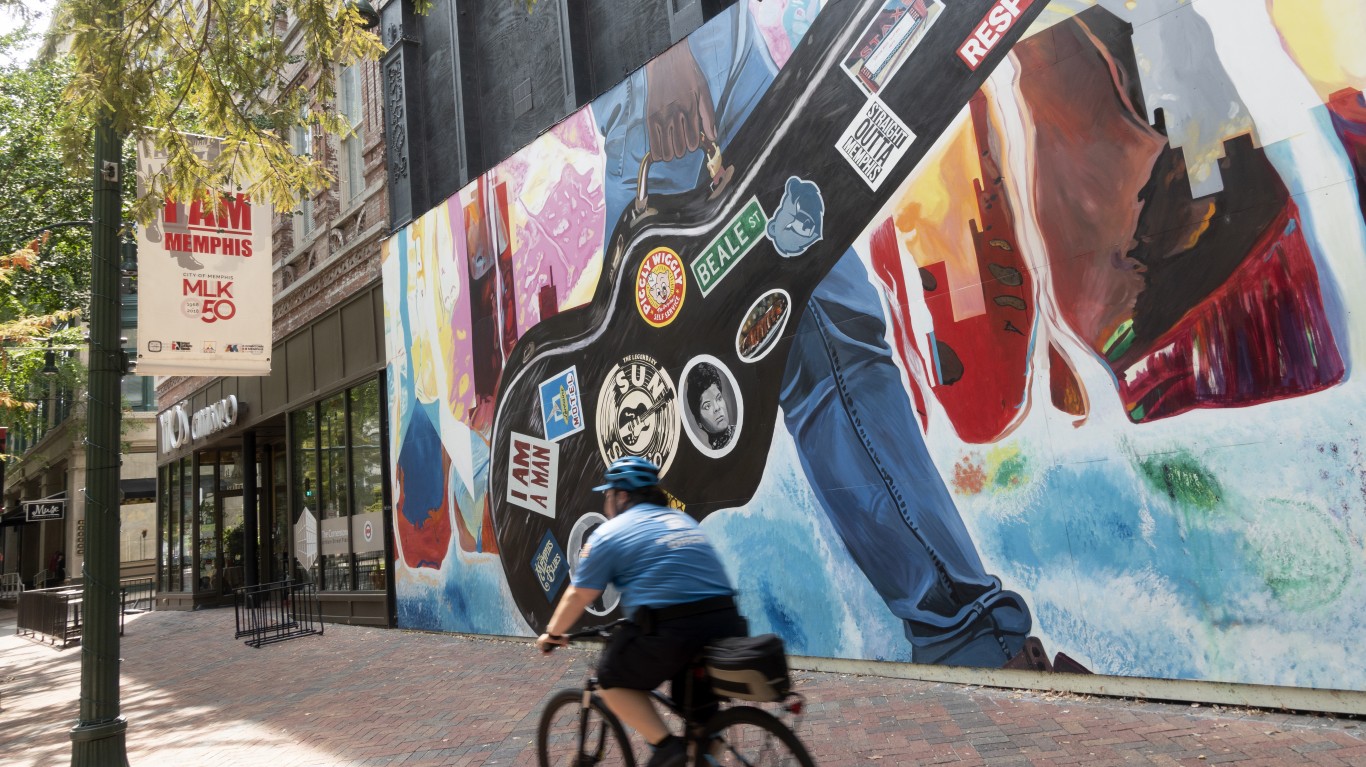
23. Memphis, Tennessee
> Bike score: 43.6
> Commuters who travel to work by bike: 0.2% — #85 out of 100 largest cities
> Population: 651,932
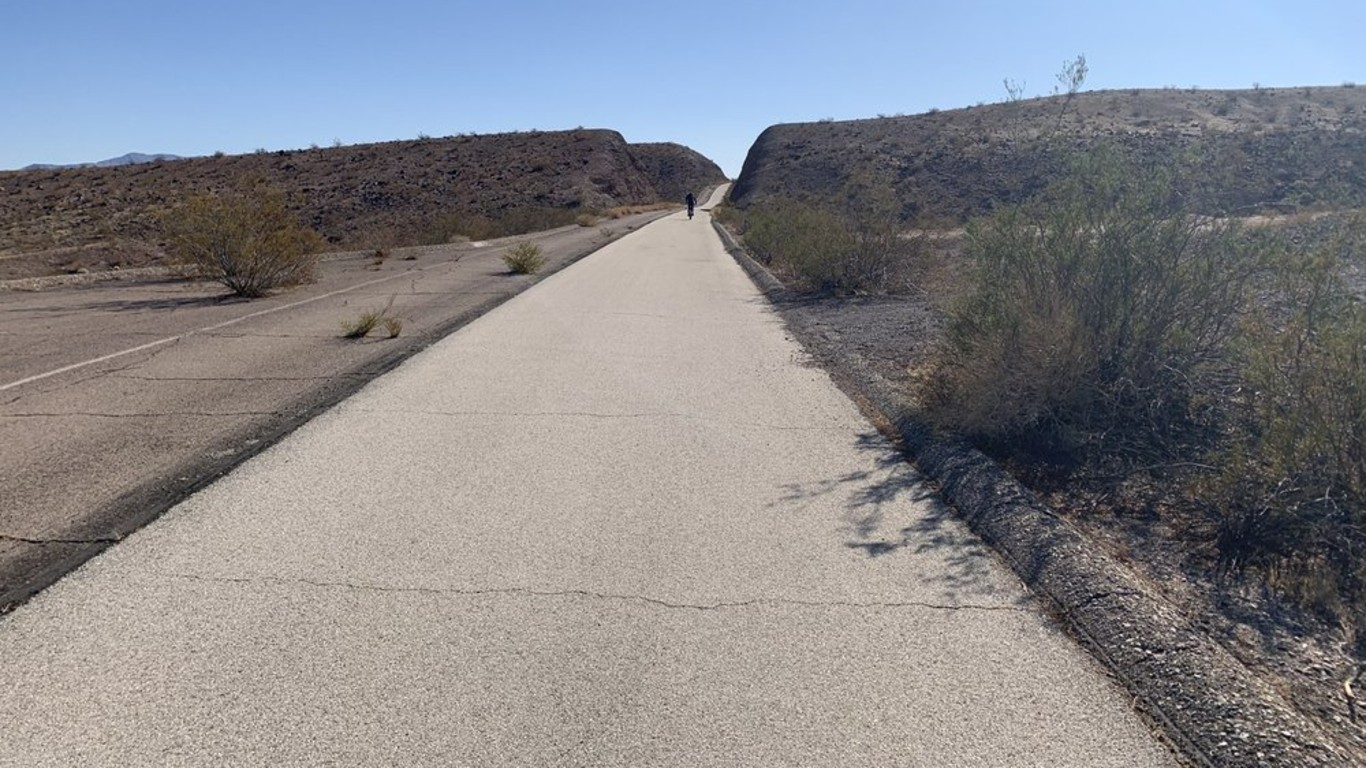
22. Henderson, Nevada
> Bike score: 43.5
> Commuters who travel to work by bike: 0.2% — #85 out of 100 largest cities
> Population: 300,116
[in-text-ad-2]
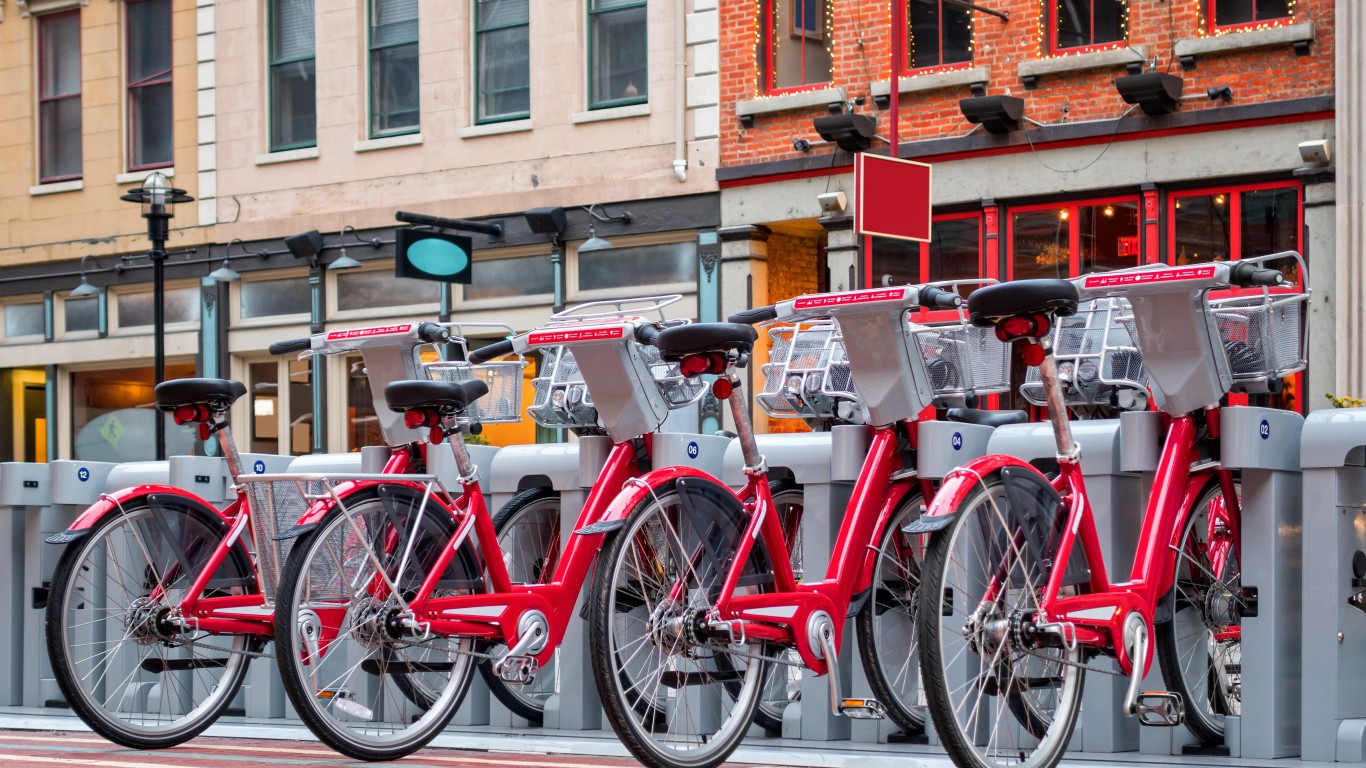
21. Cincinnati, Ohio
> Bike score: 43.3
> Commuters who travel to work by bike: 0.4% — #66 out of 100 largest cities
> Population: 301,394
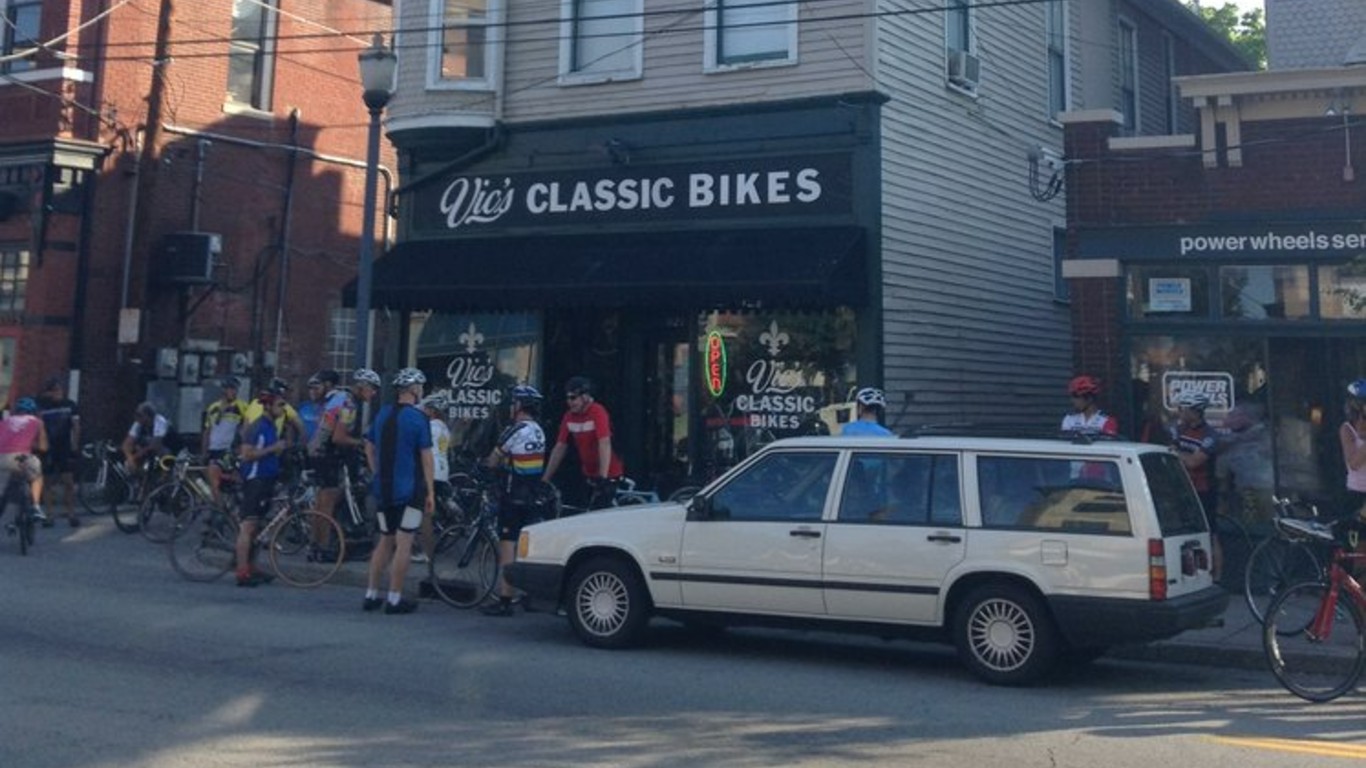
20. Louisville-Jefferson, Kentucky
> Bike score: 43.3
> Commuters who travel to work by bike: 0.4% — #66 out of 100 largest cities
> Population: 617,790
[in-text-ad]
19. Oklahoma City, Oklahoma
> Bike score: 43.2
> Commuters who travel to work by bike: 0.1% — #102 out of 100 largest cities
> Population: 643,692
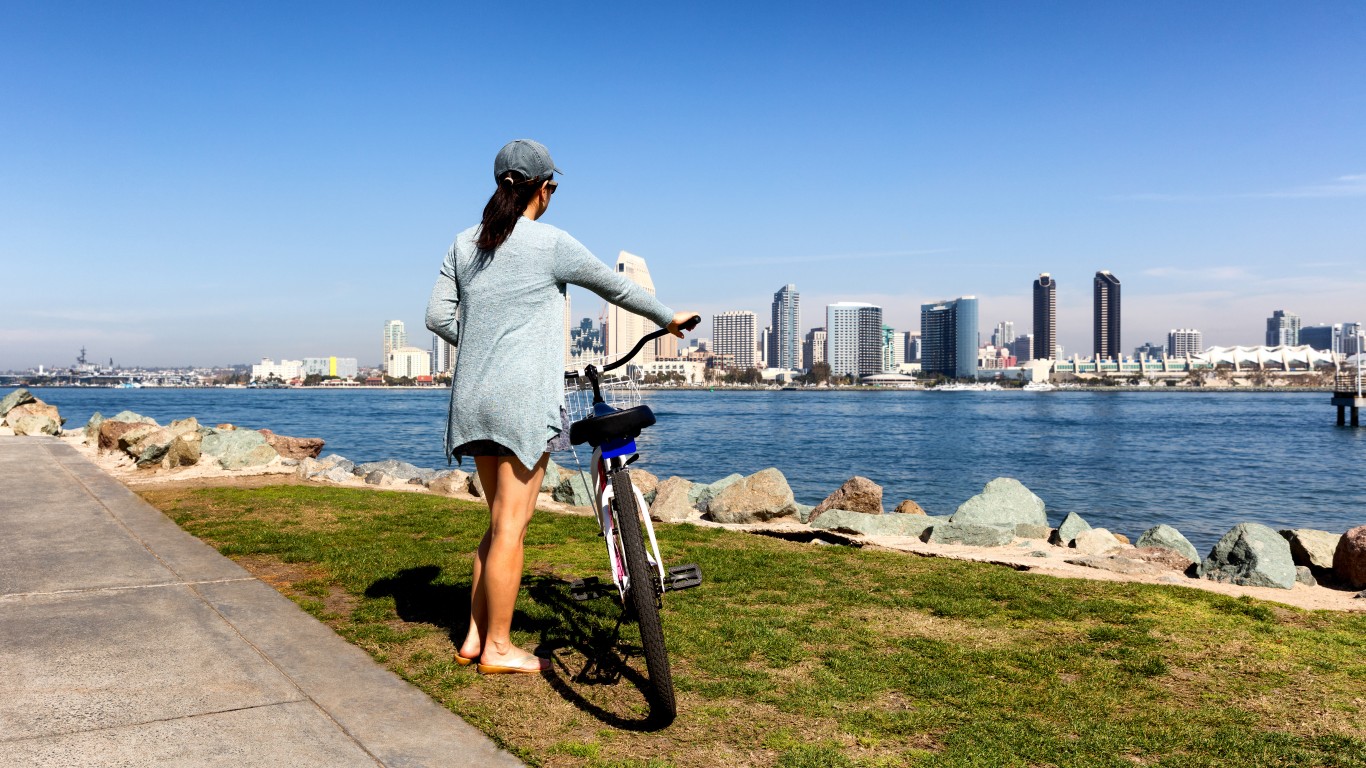
18. San Diego, California
> Bike score: 43.0
> Commuters who travel to work by bike: 0.8% — #37 out of 100 largest cities
> Population: 1,409,573
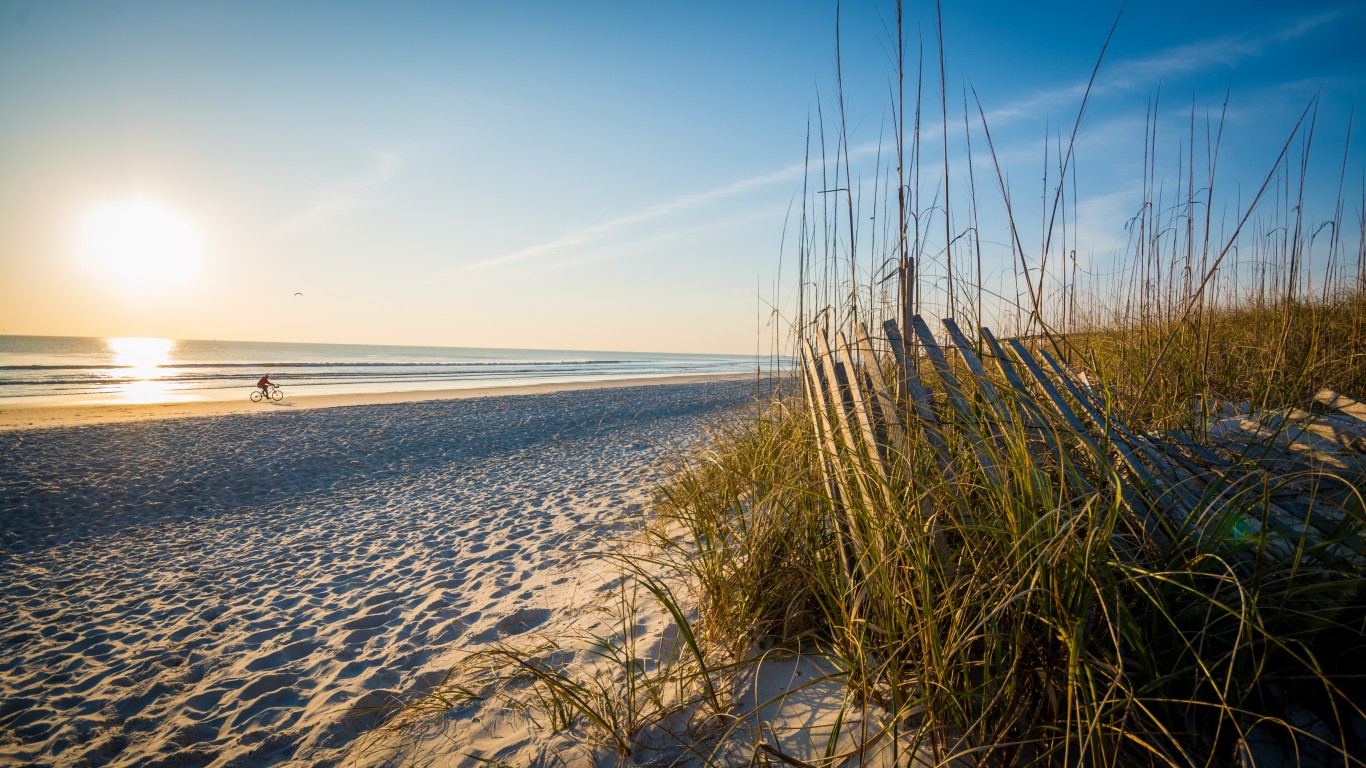
17. Jacksonville, Florida
> Bike score: 42.7
> Commuters who travel to work by bike: 0.5% — #62 out of 100 largest cities
> Population: 890,467
[in-text-ad-2]
16. El Paso, Texas
> Bike score: 42.0
> Commuters who travel to work by bike: 0.2% — #85 out of 100 largest cities
> Population: 679,813
15. Des Moines, Iowa
> Bike score: 41.7
> Commuters who travel to work by bike: 0.4% — #66 out of 100 largest cities
> Population: 215,636
[in-text-ad]
14. Durham, North Carolina
> Bike score: 41.4
> Commuters who travel to work by bike: 0.6% — #50 out of 100 largest cities
> Population: 269,702
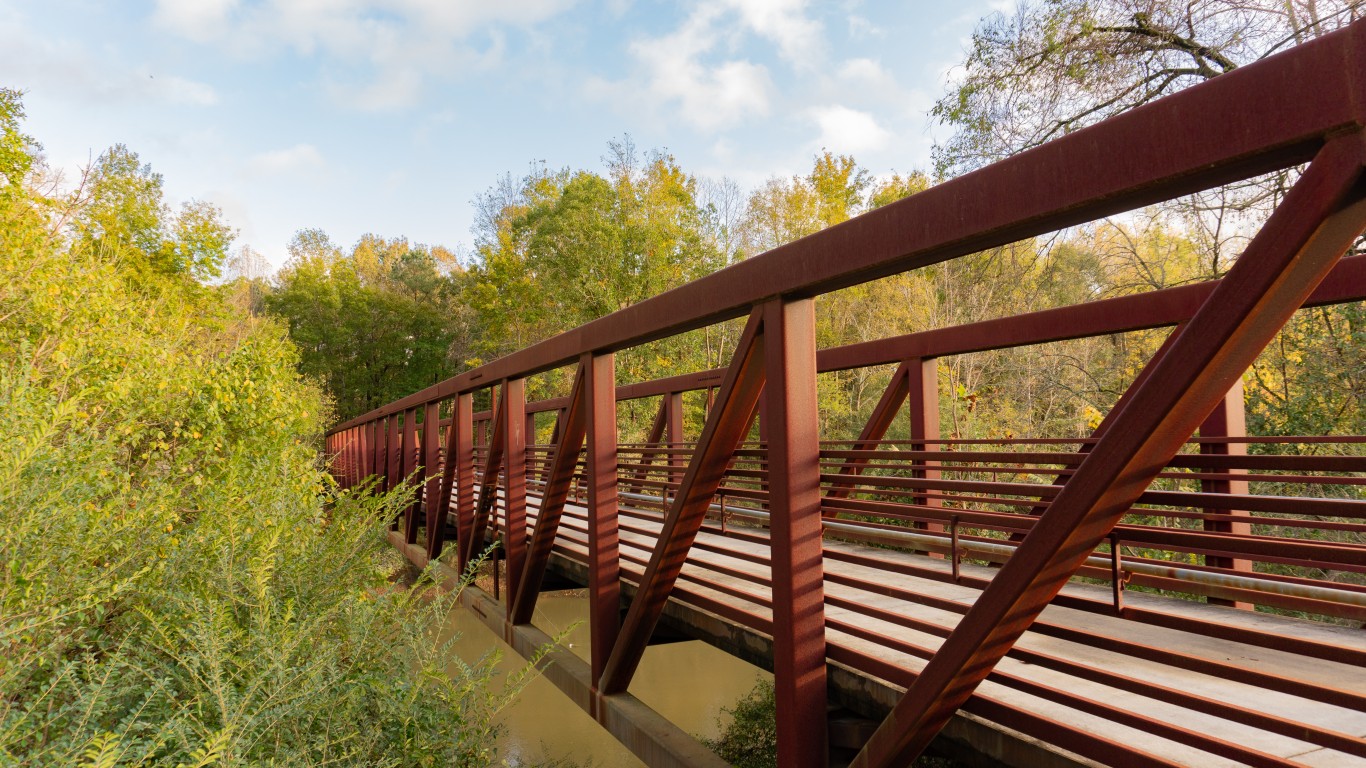
13. Raleigh, North Carolina
> Bike score: 41.3
> Commuters who travel to work by bike: 0.4% — #66 out of 100 largest cities
> Population: 464,485
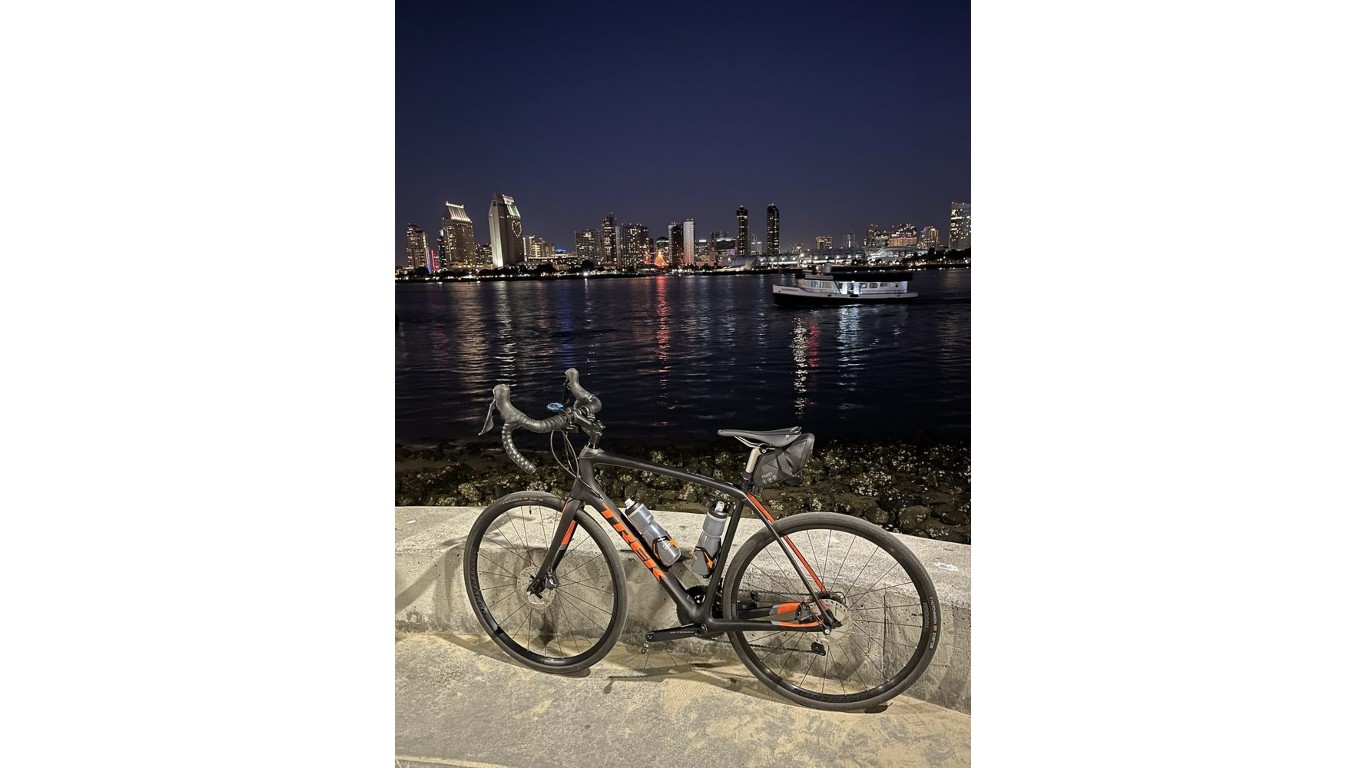
12. Chula Vista, California
> Bike score: 41.2
> Commuters who travel to work by bike: 0.2% — #85 out of 100 largest cities
> Population: 268,920
[in-text-ad-2]
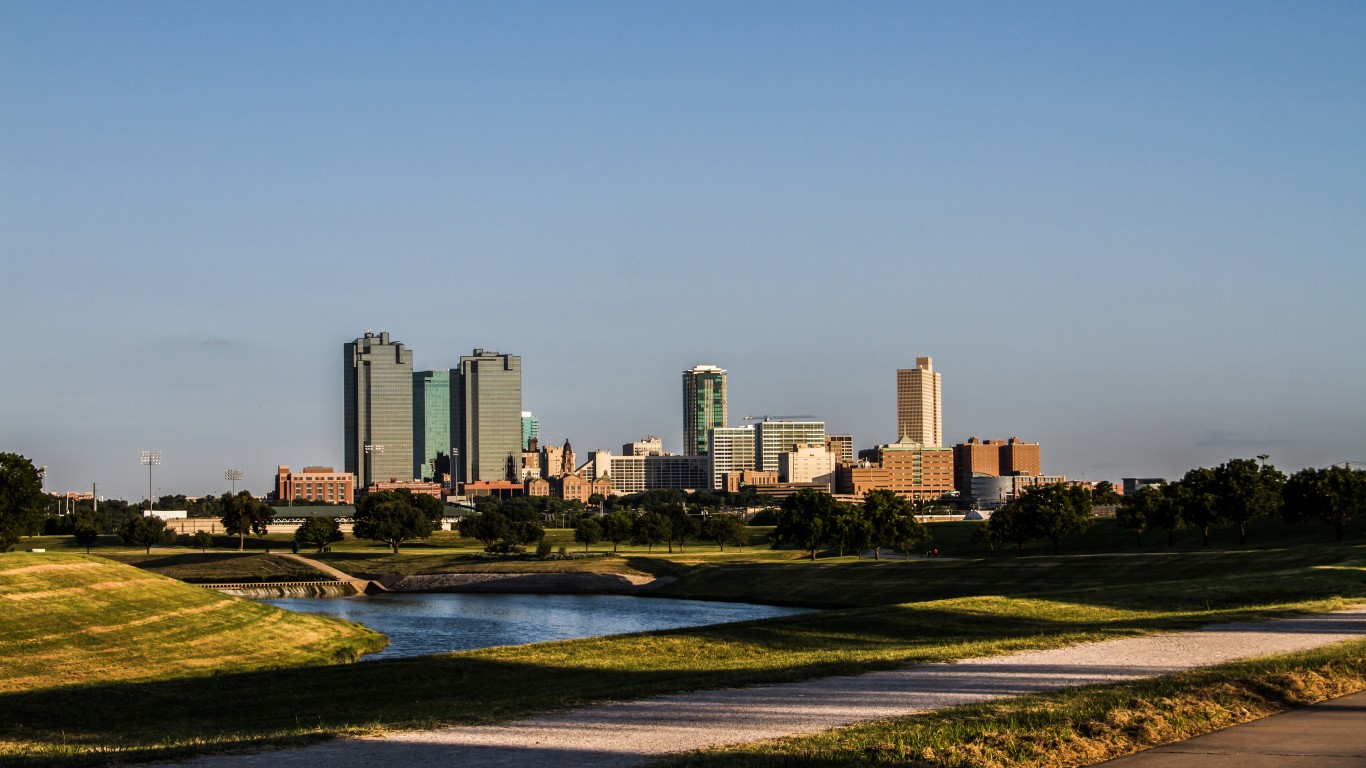
11. Fort Worth, Texas
> Bike score: 41.1
> Commuters who travel to work by bike: 0.2% — #85 out of 100 largest cities
> Population: 874,401
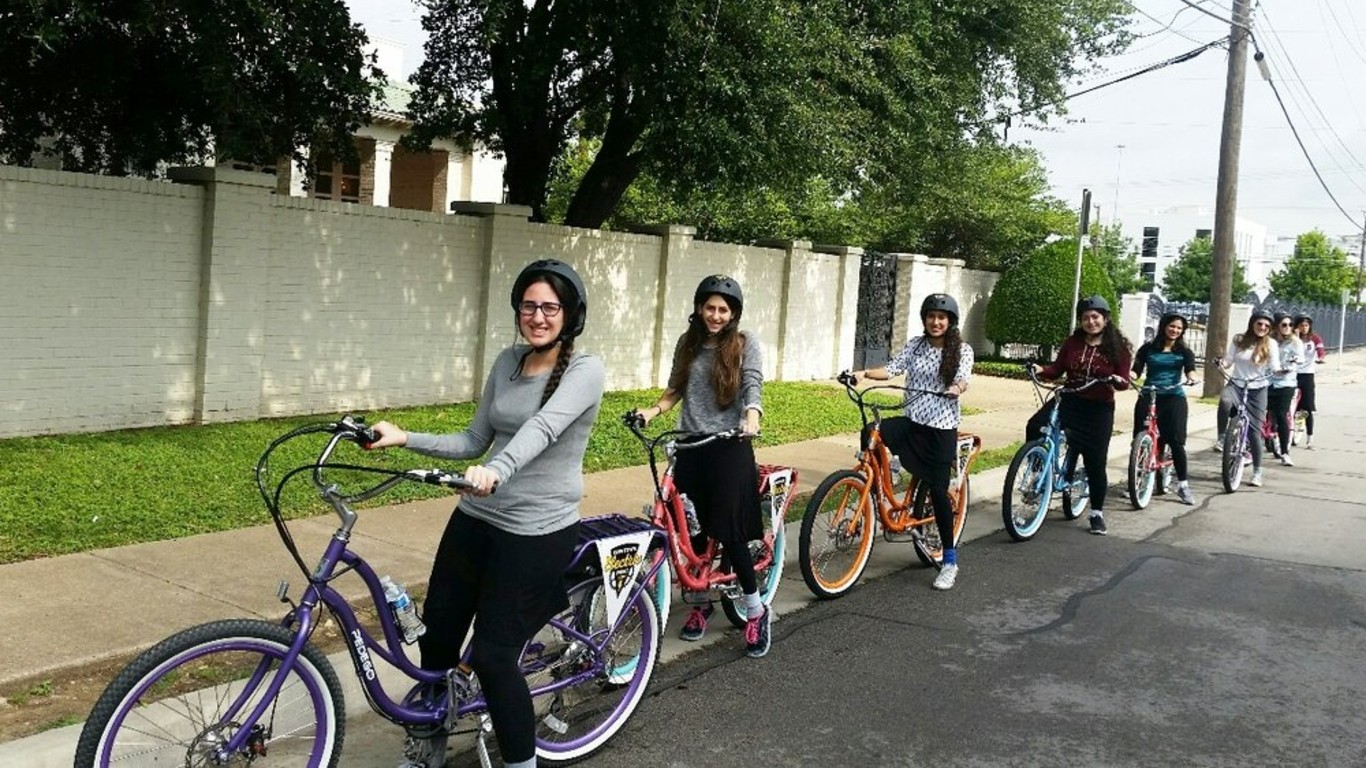
10. Arlington, Texas
> Bike score: 41.0
> Commuters who travel to work by bike: 0.2% — #85 out of 100 largest cities
> Population: 395,477
[in-text-ad]
9. Chesapeake, Virginia
> Bike score: 40.3
> Commuters who travel to work by bike: 0.1% — #102 out of 100 largest cities
> Population: 239,982
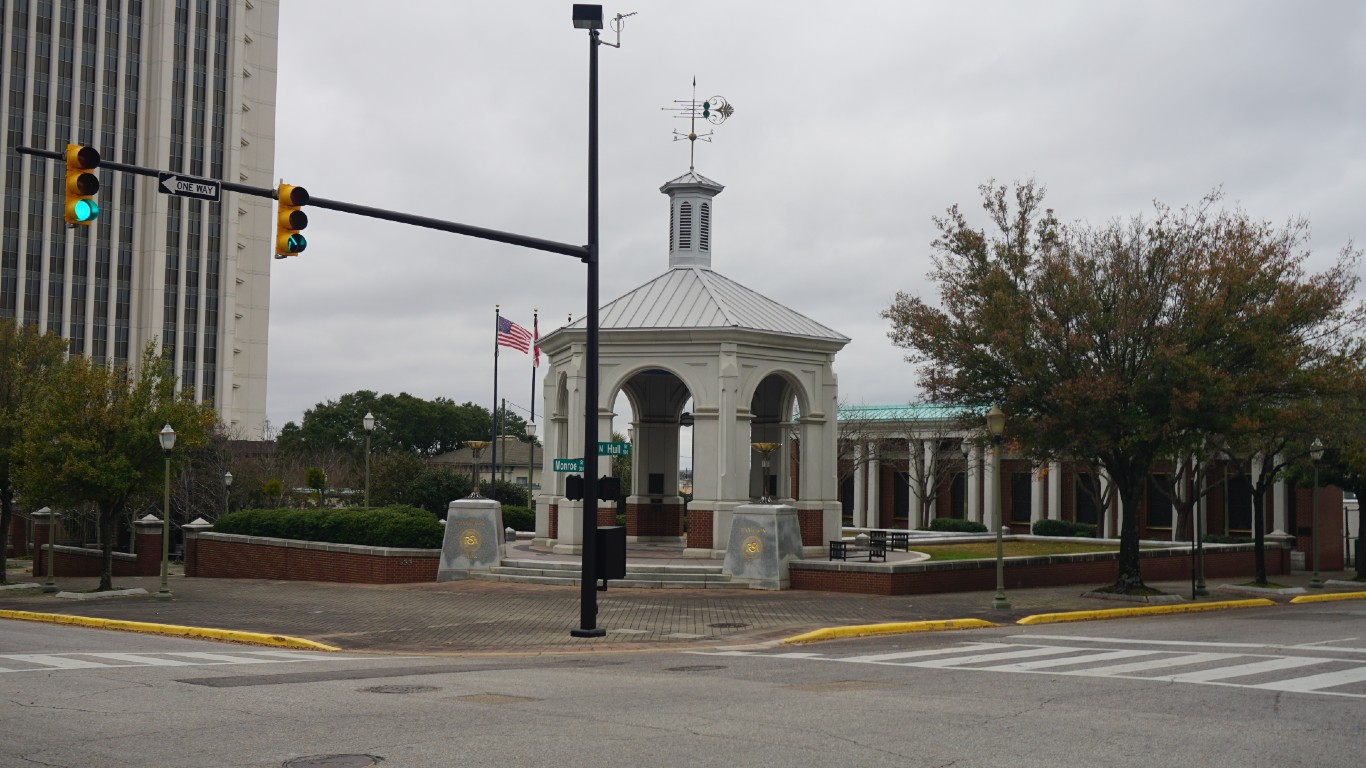
8. Montgomery, Alabama
> Bike score: 38.3
> Commuters who travel to work by bike: 0.1% — #102 out of 100 largest cities
> Population: 199,783
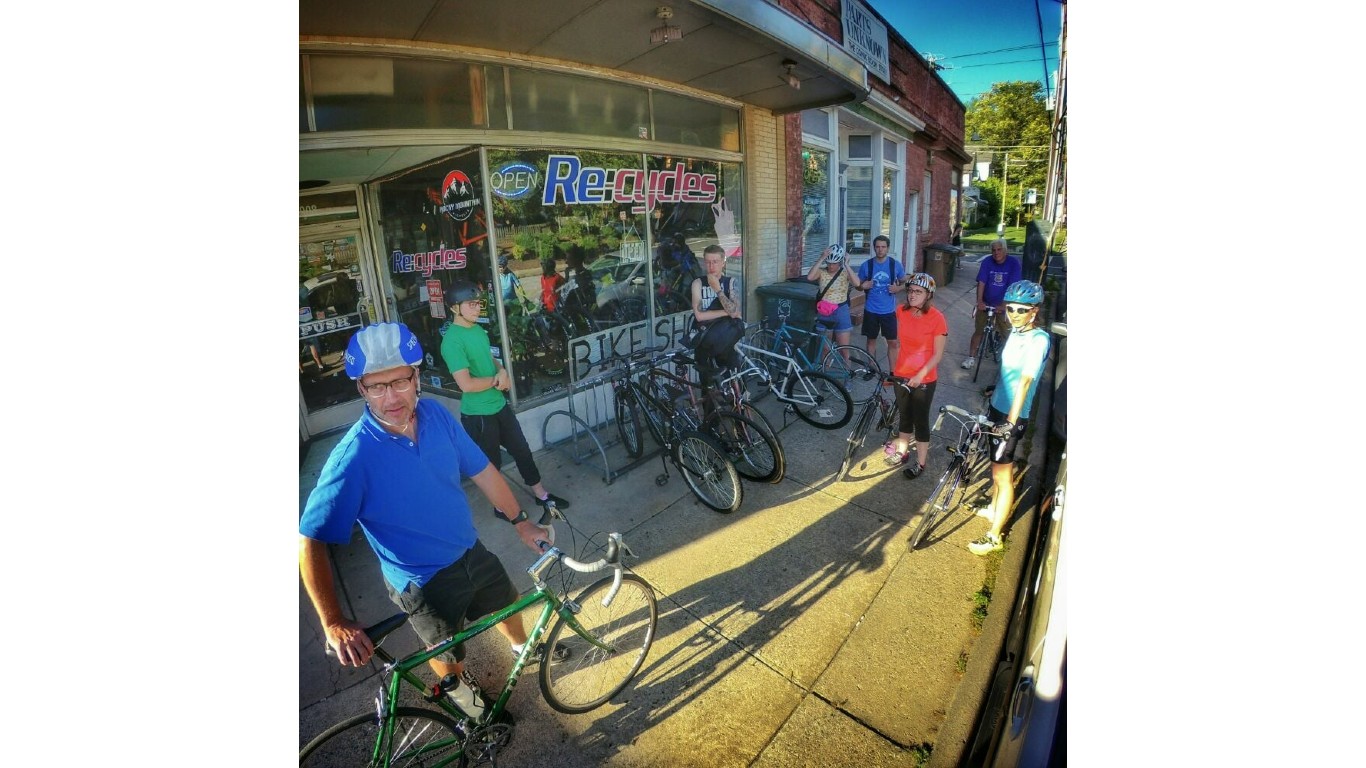
7. Greensboro, North Carolina
> Bike score: 35.2
> Commuters who travel to work by bike: 0.2% — #85 out of 100 largest cities
> Population: 291,303
[in-text-ad-2]

6. Kansas City, Missouri
> Bike score: 35.0
> Commuters who travel to work by bike: 0.2% — #85 out of 100 largest cities
> Population: 486,404
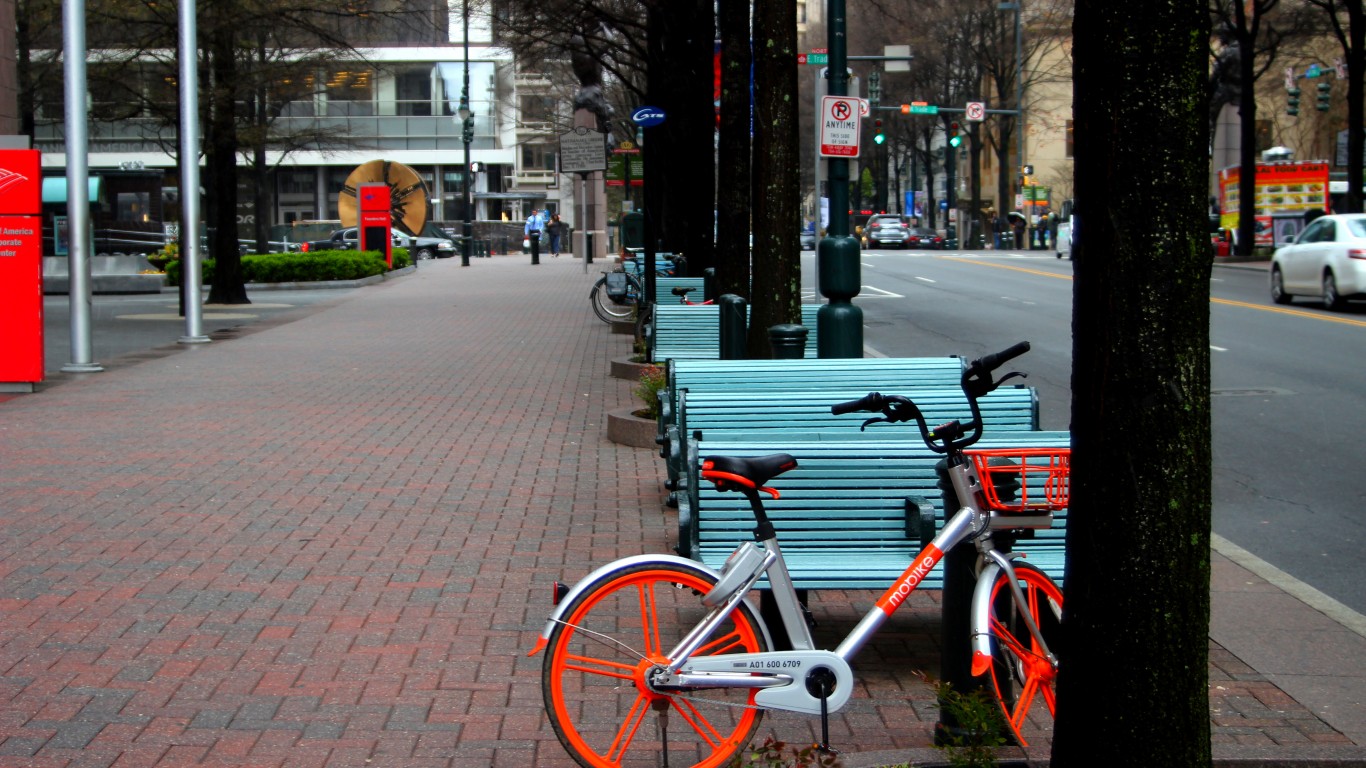
5. Charlotte, North Carolina
> Bike score: 33.9
> Commuters who travel to work by bike: 0.1% — #102 out of 100 largest cities
> Population: 857,425
[in-text-ad]
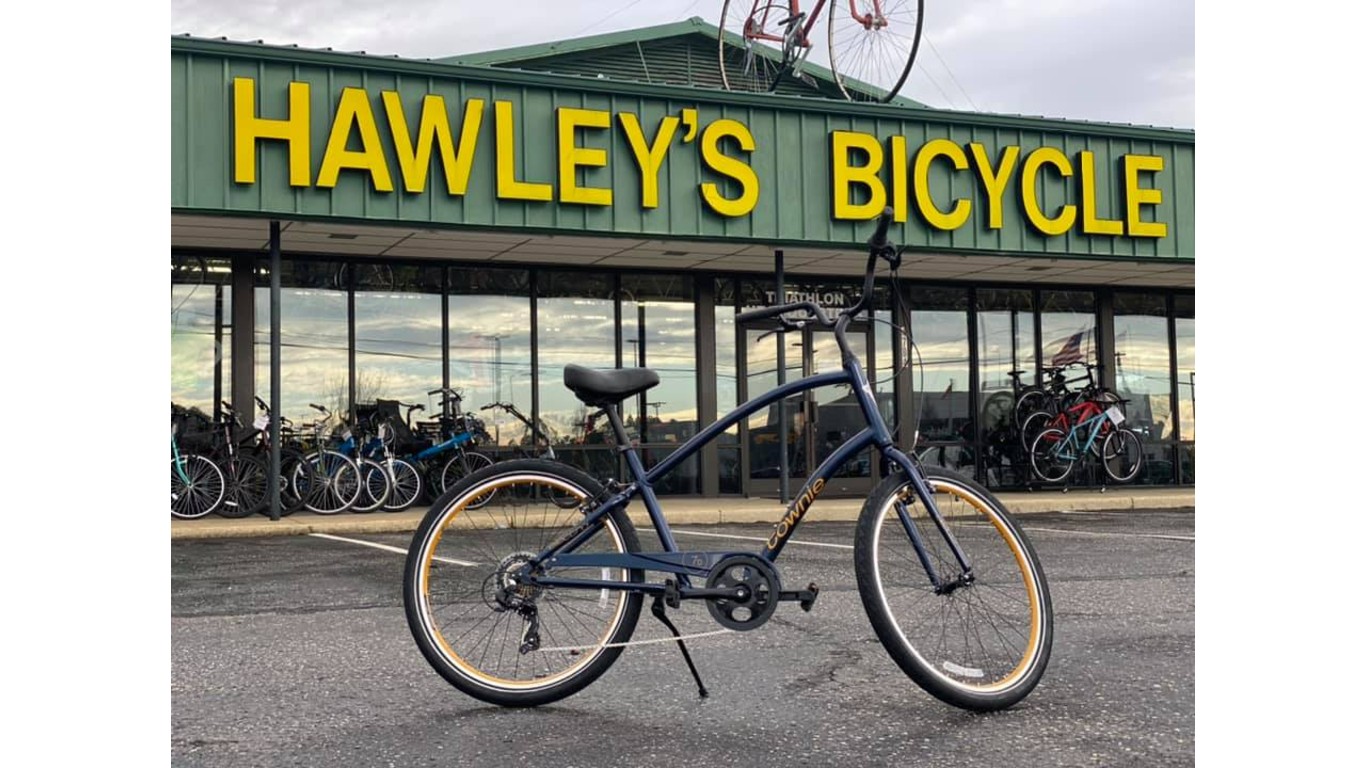
4. Fayetteville, North Carolina
> Bike score: 33.2
> Commuters who travel to work by bike: 0.2% — #85 out of 100 largest cities
> Population: 210,432

3. Birmingham, Alabama
> Bike score: 30.7
> Commuters who travel to work by bike: 0.3% — #77 out of 100 largest cities
> Population: 212,297

2. Nashville-Davidson, Tennessee
> Bike score: 29.7
> Commuters who travel to work by bike: 0.2% — #85 out of 100 largest cities
> Population: 663,750
[in-text-ad-2]
1. Winston-Salem, North Carolina
> Bike score: 29.2
> Commuters who travel to work by bike: 0.2% — #85 out of 100 largest cities
> Population: 244,115
Take Charge of Your Retirement In Just A Few Minutes (Sponsor)
Retirement planning doesn’t have to feel overwhelming. The key is finding expert guidance—and SmartAsset’s simple quiz makes it easier than ever for you to connect with a vetted financial advisor.
Here’s how it works:
- Answer a Few Simple Questions. Tell us a bit about your goals and preferences—it only takes a few minutes!
- Get Matched with Vetted Advisors Our smart tool matches you with up to three pre-screened, vetted advisors who serve your area and are held to a fiduciary standard to act in your best interests. Click here to begin
- Choose Your Fit Review their profiles, schedule an introductory call (or meet in person), and select the advisor who feel is right for you.
Why wait? Start building the retirement you’ve always dreamed of. Click here to get started today!
Thank you for reading! Have some feedback for us?
Contact the 24/7 Wall St. editorial team.
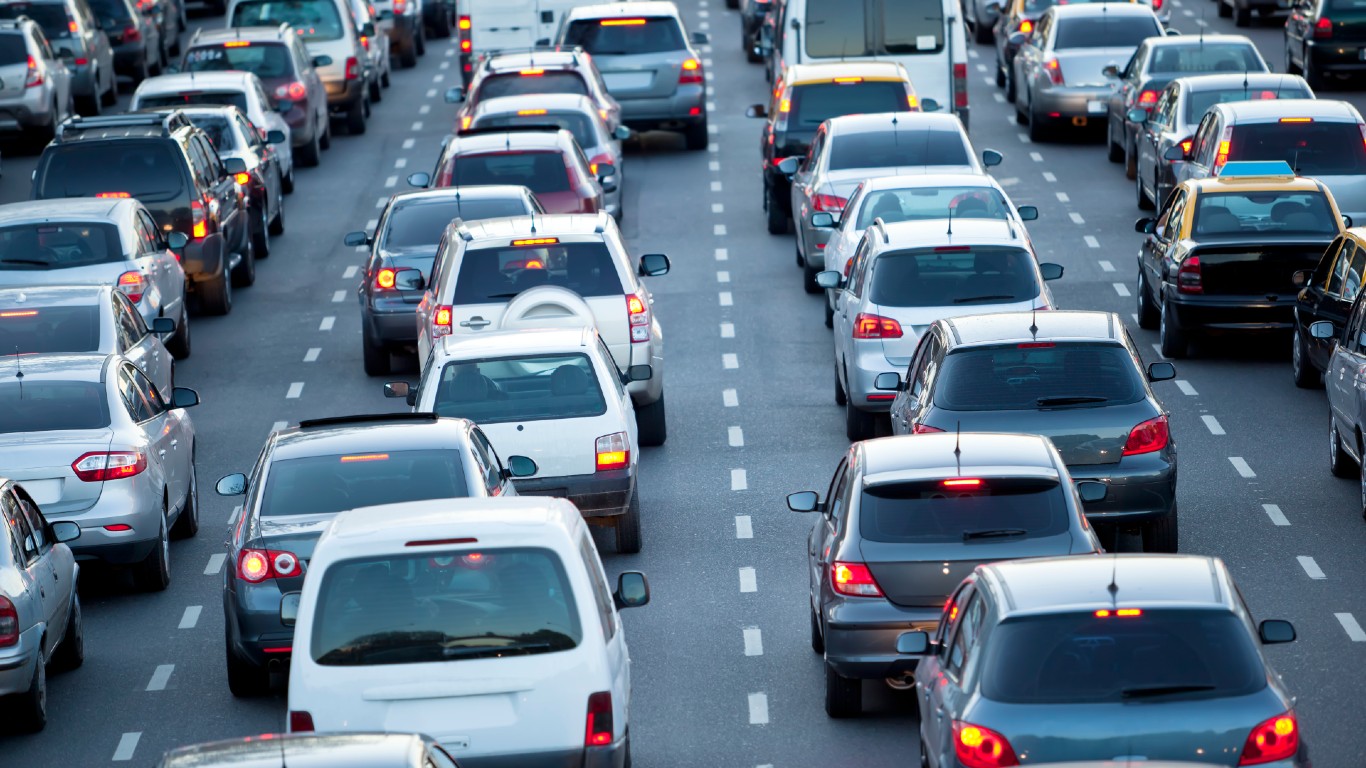 24/7 Wall St.
24/7 Wall St.